10 Blisters, infections: Varicella zoster virus
Figure 10.1 VZV pathogenesis.
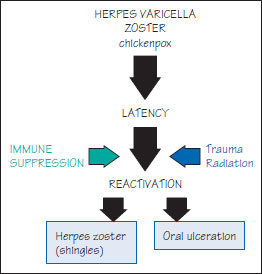
Figure 10.2 Chickenpox ulceration.
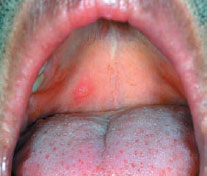
Figure 10.3 Chickenpox rash.
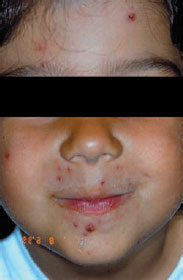
Figure 10.4 Trigeminal dermatomes.
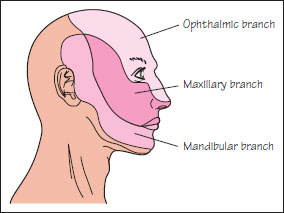
Figure 10.5 Maxillary zoster.
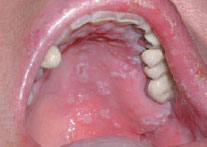
Figure 10.6 Zoster rash.

Figure 10.7 Herpes hematoxylin and eosin.
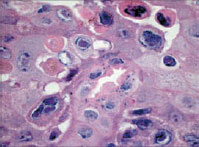
Varicella zoster virus (VZV; human herpesvirus-3; HHV-3) is highly contagious, spreading via droplets from the nasopharynx or contact with secretions. VZV infects the lymphoreticular system, capillary endothelia and epithelia, causing intercellular and intracellular edema and a rash.
The immune system eventually eliminates VZV from most locations and provides lifelong protective immunity from chickenpox, but VZV remains dormant in sensory nerve ganglia (Figure 10.1). Vaccination against VZV will also elicit immunity but further vaccination is necessary five years later.
Chickenpox (varicella)
Definition: A centripetal (concentrated mainly on trunk and head and neck) rash which passes through macular, papular, vesicular and pustular stages.
Prevalence (approximate): Common.
Age mainly affected: 4–10 years.
Gender mainly affected: M = F.
Etiopathogenesis: VZV.
Diagnostic features
History: After an incubation of 2–3 weeks, primary infection may be subclinical or present with chickenpox. There may be a known epidemic.
Clinical features
Oral: Vesicles, especially in the palate, rupture to produce painful, round or ovoid ulcers, with inflammatory haloes (Figure 10.2)/>
Stay updated, free dental videos. Join our Telegram channel

VIDEdental - Online dental courses


